What Is Everyday Carry (EDC)?
Everyday carry, or EDC, refers to the essential items you keep on you daily to handle both routine tasks and unexpected situations. For preppers, it’s not just about convenience — it’s about readiness.
Think of EDC as your first line of defense in an emergency. It bridges the gap between being caught off guard and reaching your bug-out bag or home supplies. The philosophy is simple: if it’s not with you, it can’t help you.
The Prepping Mindset Behind EDC
Everyday carry for preppers isn’t about fear — it’s about independence. You can’t predict when you’ll lose cell service, encounter a car breakdown, or face a sudden storm. But you can choose to be ready.
At its core, EDC represents self-reliance, adaptability, and minimalism. You’re not preparing for doomsday — you’re preparing for every day.
Core EDC Essentials for Preppers
Every prepper’s EDC is unique, but these core categories form the foundation of a well-rounded kit. Here’s what you should have and why.
🗡️ 1. Knife or Multitool
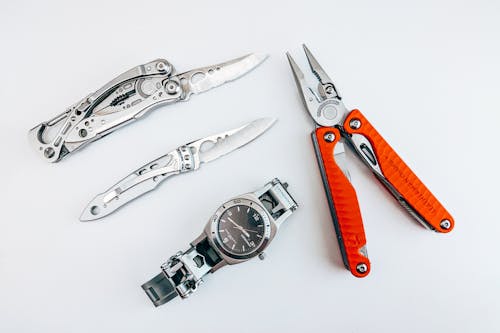
A compact knife or multitool is the backbone of any EDC setup. From cutting rope to opening cans or fixing gear, it’s an all-purpose problem-solver. Choose a legal-length folding knife or multitool with pliers, scissors, and screwdrivers.
- ✅ Tip: Go for stainless steel and one-hand operation.
- 🔗 Related: How to Build a Budget Bug-Out Bag
- 🔗 External: Knife Laws by State (AKTI)
🔦 2. Flashlight or Keychain Light
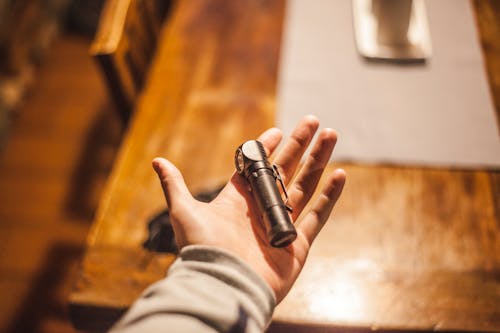
When the power goes out, a small LED flashlight can be your best friend. Look for rechargeable or keychain-sized models that are bright yet discreet. A flashlight is essential for urban and rural preppers alike.
🔥 3. Firestarter or Lighter
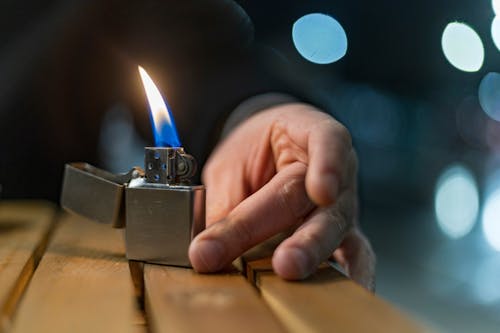
Fire equals safety, warmth, and the ability to signal for help. Carry a waterproof lighter or a compact ferro rod and tinder capsule. Even if you’re in a city, a lighter can help with warmth, sterilization, and signaling.
💊 4. Mini First Aid Essentials
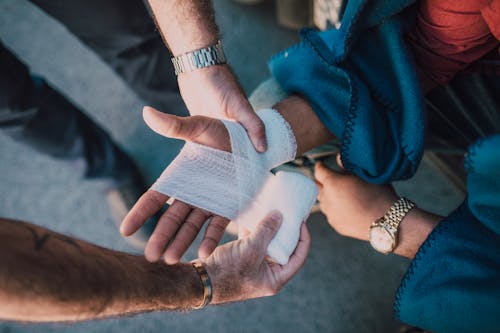
You don’t need a full trauma kit — just the basics to prevent infection or treat small wounds:
- Bandages and antiseptic wipes
- Pain relievers
- Allergy or motion sickness meds
- Compact gauze pads
🔗 Related: How to Build a Prepper First Aid Kit
💵 5. Cash and Identification
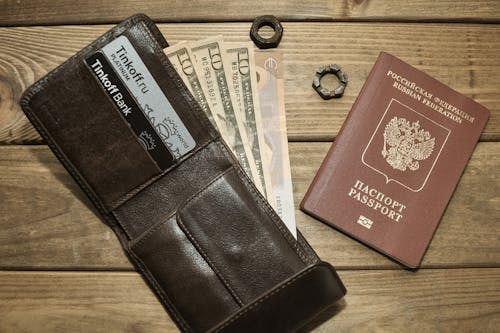
Digital payments can fail during disasters. Always keep emergency cash in small bills ($1s, $5s, $10s) and a photocopy of your ID in a waterproof sleeve.
🔗 Related: How to Build an Emergency Cash Kit
🔋 6. Compact Power Bank or Solar Charger
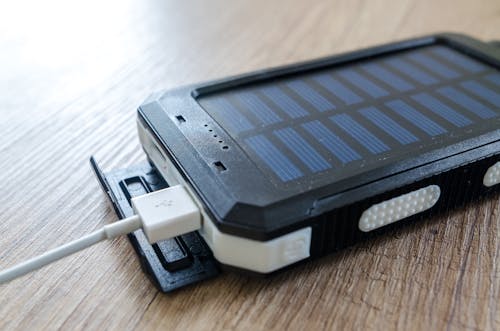
Your phone is a lifeline — for maps, contact, and information. A small power bank or solar charger keeps you connected when the grid goes down.
🔗 Related: DIY Solar Power Backup for Emergencies
🪢 7. Paracord Bracelet or Micro Tools
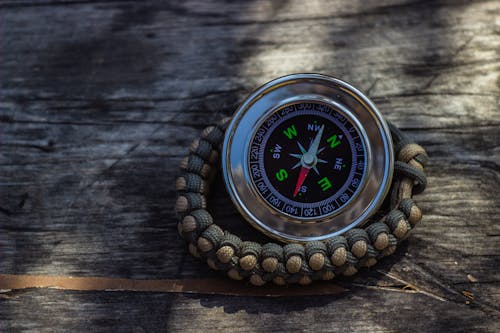
Paracord is lightweight, strong, and endlessly useful. Wear it as a bracelet or keychain to tie, secure, or repair almost anything. Some models include fire starters or whistles for added utility.
Building Your Everyday Carry for Preppers by Scenario
Every prepper’s life looks different. A city commuter’s EDC differs from a hiker’s or parent’s. Here’s how to tailor your kit to your environment.
🏙️ Urban EDC
Goal: Practical, discreet, and efficient.
Best items:
- Keychain flashlight
- Small multitool
- Portable phone charger
- Minimalist wallet
- Legal self-defense option (pepper spray, pen, etc.)
Urban EDC is all about blending in — staying prepared without attracting attention.
🌲 Outdoor EDC
Goal: Self-reliance when infrastructure isn’t available.
Best items:
- Fixed-blade or heavy-duty folding knife
- Ferro rod and tinder capsule
- Mini compass
- Paracord bracelet
- Water purification straw
Outdoor EDC is ideal for campers, hikers, or anyone venturing off-grid.
👨👩👧 Family EDC
Goal: Readiness for family emergencies.
Best items:
- Band-Aids and wipes
- Snacks and small water bottle
- USB charger
- Emergency contact card
A parent’s EDC should focus on comfort, calm, and communication.
🧰 Workplace EDC
Goal: Functionality within workplace rules.
Best items:
- Utility card multitool
- Pen and notebook
- Compact flashlight
- Hygiene items
- Hidden cash stash
In secure environments, subtlety is key — choose items that look ordinary but serve multiple purposes.
Common EDC Mistakes (and How to Avoid Them)
Even seasoned preppers make errors in their EDC setups. Here’s what to watch out for:
- Overpacking – If it’s heavy, you’ll stop carrying it.
- Ignoring local laws – Research knife or pepper spray restrictions.
- Neglecting maintenance – Recharge, clean, and sharpen monthly.
- Failing to rotate items – Expired meds and dead batteries are useless.
- Copying others blindly – Customize to your routine and environment.
The best everyday carry for preppers is one you actually use.
Maintaining and Rotating Your EDC
Maintenance ensures reliability when you need it most.
- Monthly: Recharge or replace batteries and refill lighters.
- Quarterly: Test power banks and first aid supplies.
- Yearly: Refresh cash and review legal carry changes.
Keep a simple EDC rotation checklist — or download one from your favorite prepper blog (👀 coming soon from Backyard Bug Out!).
Example: The Backyard Bug Out Everyday Carry Kit
Here’s a sample setup that balances practicality, size, and cost:
| Category | Item | Purpose |
|---|---|---|
| Knife | Gerber Dime Multitool | Cutting, repairs |
| Light | Nitecore TINI 2 | Compact illumination |
| Fire | Bic Mini | Reliable ignition |
| First Aid | Bandages + wipes | Quick treatment |
| Power | Anker Nano Bank | Recharge devices |
| Paracord | Bracelet | Repairs and tie-downs |
| Cash | $40 in small bills | Emergency payments |
Small, powerful, and ready — exactly what an everyday carry for preppers should be.
FAQs About Everyday Carry for Preppers
Q: What’s the difference between EDC and a bug-out bag?
A: EDC is for daily life; a bug-out bag is for evacuation or extended emergencies.
Q: How heavy should my EDC be?
A: Under two pounds total is ideal — comfort ensures consistency.
Q: Is EDC legal everywhere?
A: Most items are, but check local knife and self-defense regulations.
Q: What’s the best EDC for city living?
A: Think minimal, multipurpose, and discreet — flashlight, wallet multitool, power bank.
Q: Do I still need EDC if I have a bug-out bag in my car?
A: Absolutely. You’re not always near your car — EDC bridges that gap.
Final Thoughts: Confidence in Your Pocket
The best part about everyday carry for preppers is how accessible it is. You don’t need to spend thousands or carry bulky gear — just start with the essentials and build over time.
Preparedness doesn’t mean paranoia. It means peace of mind, and that confidence fits right in your pocket.
✅ Next Steps
- 📥 Download your free EDC checklist (coming soon!)
- 📖 Read next: How to Build a Budget Bug-Out Bag
- 💧 Also read: Water Preparation 101
